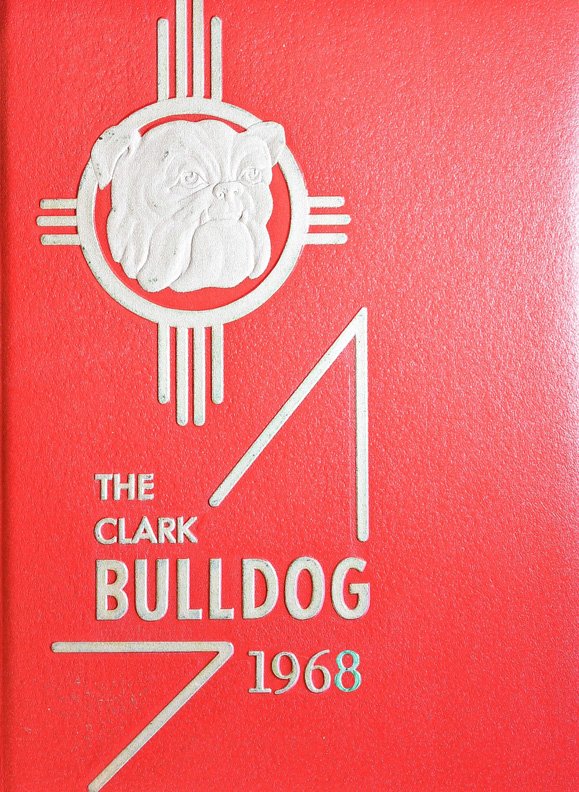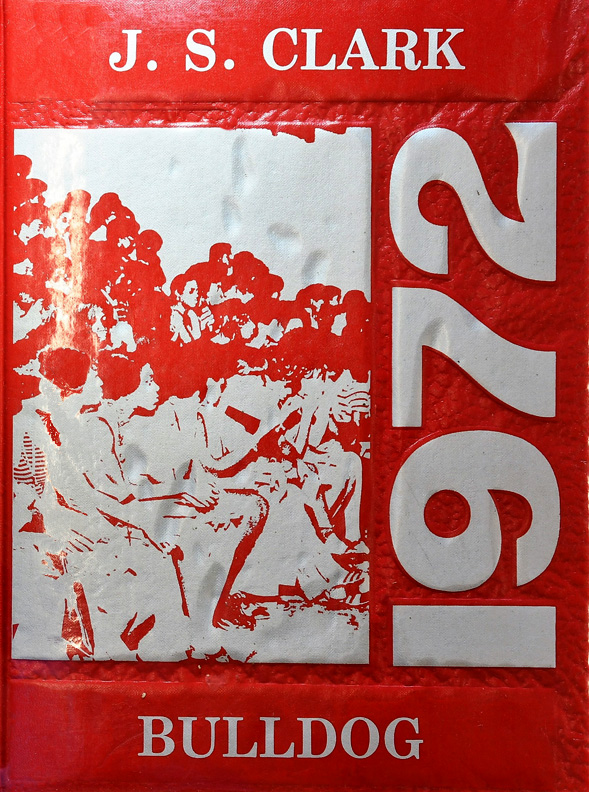

J
HISTORY OF J. S. CLARK HIGH SCHOOL, NEW ORLEANS
In 1947, the Orleans Parish School Board transferred the Benjamin Franklin Elementary School to the Negro Division. That following September, approximately 325 graduates from Couvent, Craig, Jones, Lee Station (later changed to McDonogh Number 40), Lockett, Macarty, Nelson, Seabrook, Wicker and McDonogh Number 37 attended this school, the Joseph S. Clark High School.
In March of 1949, another building, the then unused Edward Douglas White High School, was given to us. This building seven blocks away, was called the Joseph S. Clark Senior High School Annex, which later became the main building and the original Joseph S. Clark became the annex.
During the mid-term of the first session (1947-1948), approximately 200 mid term elementary school graduates were added, thus bringing the first year’s enrollment up to about 525. In the year of 1949-50, the total registration reached 1,673. For the fourth year 1950-51, with an expected registration of more than 2,200, it became necessary to switch to a double” A” rating by the Louisiana State Department of Education.
During the summer of 1954, the Department of Superintendence separated the two buildings (the Joseph S. Clark Main Building and the Joseph S. Clark Annex), organizing a senior high school (10th-12th grades) at the Main Building and a school for ninth grade pupils at the former Annex. The former Annex was then named the Andrew J. Bell Junior High School. This change reduced both the faculty and the student body. The faculty was reduced from 84 to 54, and the number of pupils from 2,200 to 1351, and the platoon system still remained in the schools. The registration for the 1954 -55 session numbered 1,351. Administration was carried on during this year by the principal assigned in July of 1947, with the aid of one teacher-in- charge.
At the beginning of the 1955-56 session, the position of teacher -in-charge was abolished and an assistant principal was assigned for the first time. The principal was permitted by the local Department of Superintendence and the State Department of Education to shorten the class periods from 60 minutes to 55 minutes for the 10 periods of the day, and to use the extra 50 minutes for two homeroom periods. The morning homeroom was scheduled for 11:35 A.M. to 12 noon, and the afternoon homeroom, from 12 noon to 12:25 P.M. Before this time a very unsatisfactory and unstable system had been used—first period and sixth period classes had been designated as homeroom classes.
The organization of the school for the 1956-57 session and the 1957-58 session was basically the same as that of the 1955-56 session.
The Clark School’s passed and failed record is the second lowest in the Negro schools in the city, and the percentage of failures is lower since platooning than before platooning.
For the past eight years (1951-58) Clark High School has been most successful in the Annual Louisiana Interscholastic Athletic Literary Association subject matter competition. In fact, Clark has made a better showing than any other school in the state. Clark was second place in 1951, 1952, and 1953; first place in 1954 and 1955; second place in 1956 and first place in 1957. Each year the winner is presented the J.S. Clark Memorial Trophy, but a school must win first place three consecutive years in order to own the trophy.
In state competition, there are three major rallies: (1) subject matter rally held annually at Southern University during the month of March; the band rally held annually at Southern during the month of April; and (3) the drama festival held annually at Grambling College in the spring. In 1955, Clark High School won first place in all three of these events.
The registration of the Clark Senior High School has fluctuated from 326 at its birth in 1947, to a peak of 2,205 in 1950, and gradually decreasing to its present total of 1,325 for the 1957-58 session.
Since there was no place to practice, the athletes journeyed all over town to get in as much practice as they could— on playgrounds, uptown, downtown, and communities just outside the campus of Dillard University. In spite of this, the football team lost only one game in 1950, 1951, and 1952, and finished in second place each year in a seven-team league. In 1955, the team, undefeated, won the New Orleans District Championship, and in 1956 again finished in second place. Since 1955, the boys have practiced in the Pontchatrain Park, which involves a round trip of almost twenty miles each practice day.
In 1951, the boys’ basketball team won the city and district championship. And in 1952, the team won the State championship, thus making it possible for some of the boys to participate in the National Championship Tournament held in Nashville, Tennessee.
Our band was organized in 1949, and since 1952 has been considered one of the top bands in the city and state. For three consecutive years, 1955,1956, and 1957, the Clark school band has placed first in the State Band Rally held annually in Baton Rouge, Louisiana.
In drama, the Clark group placed first in the district competition for several years and in 1955, after having placed second in state-wide competition the previous year, won first place in the State Drama Festival which is held annually at Grambling College.




